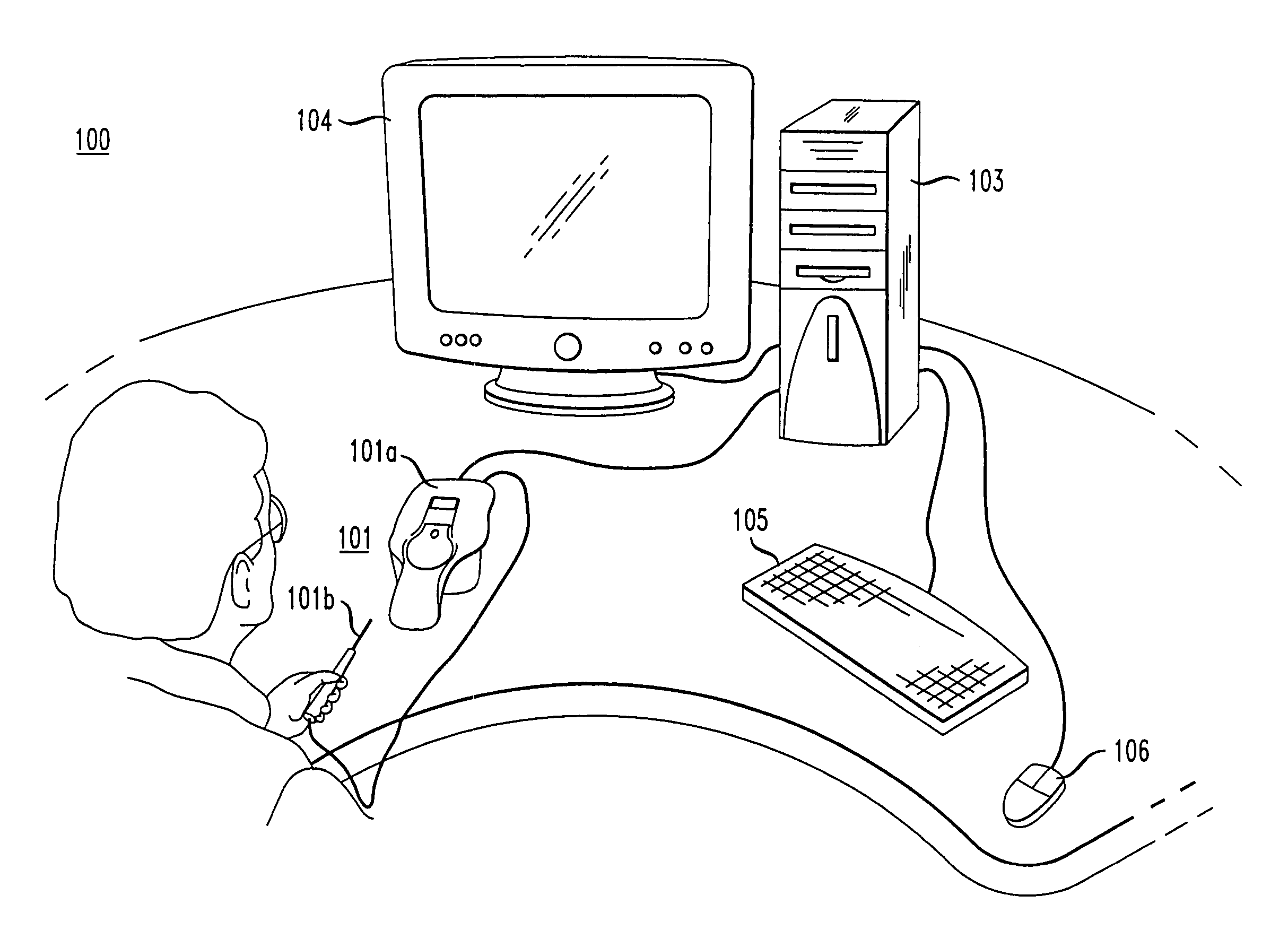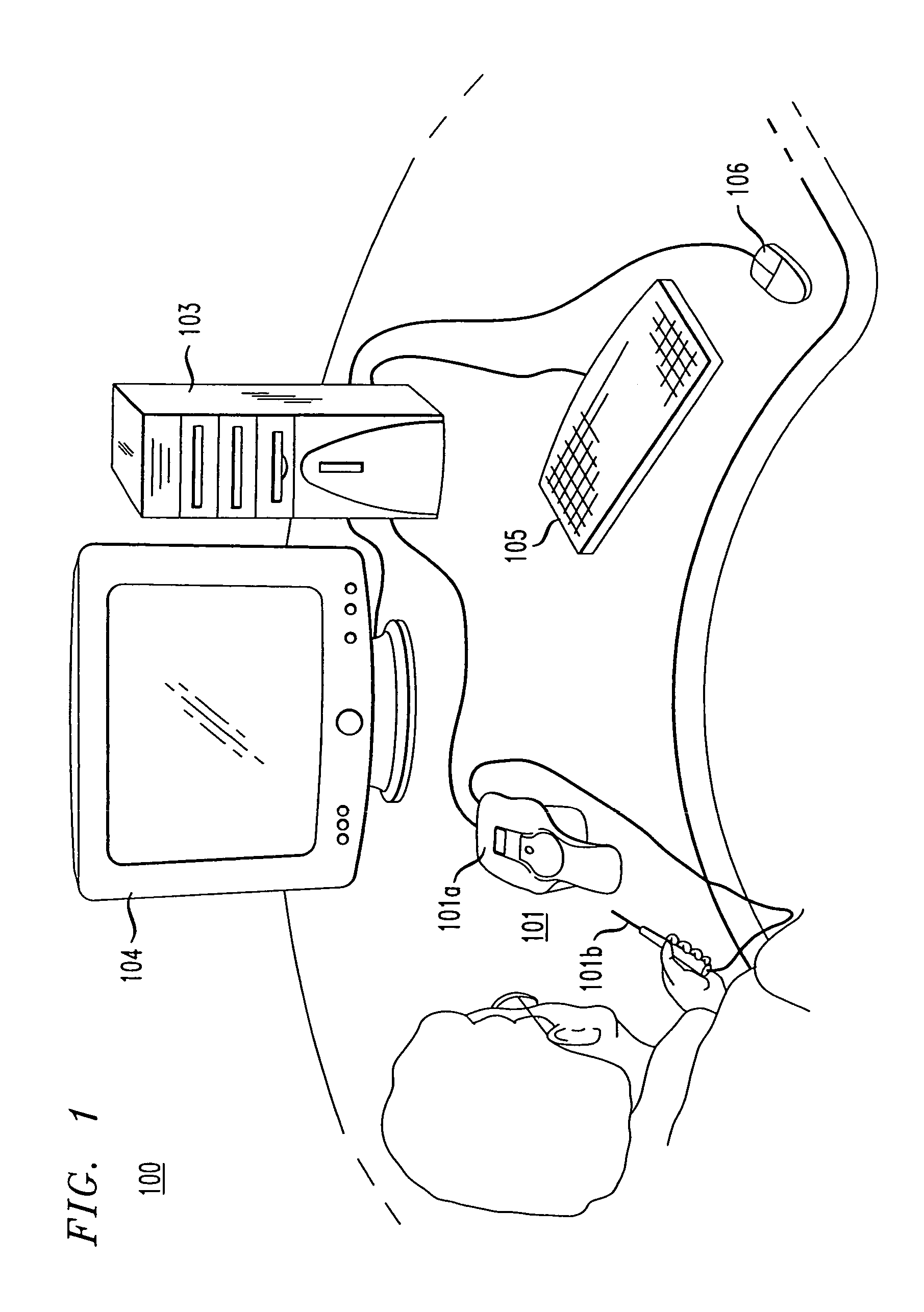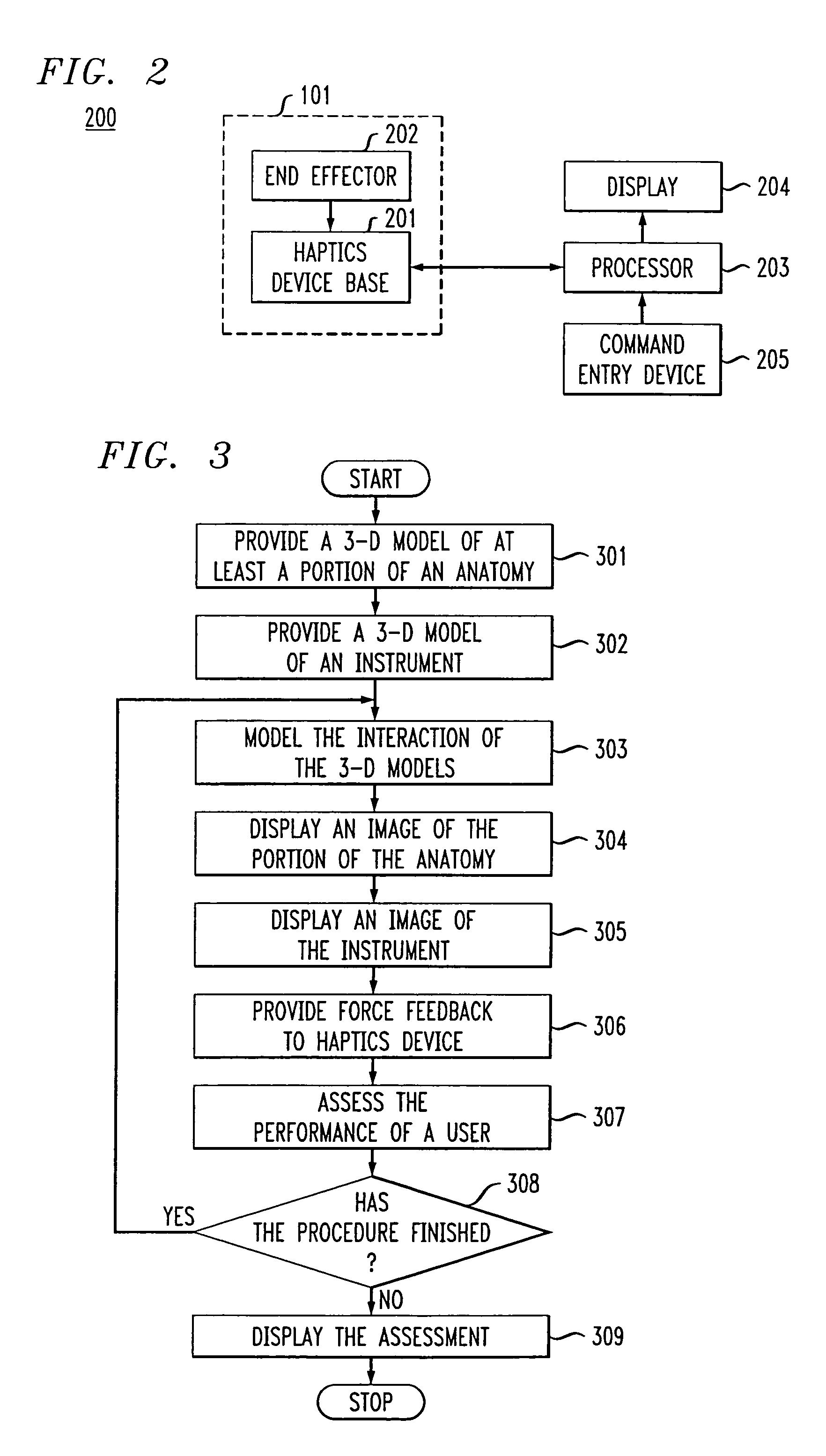Vascular-access simulation system with three-dimensional modeling
a simulation system and vascular-access technology, applied in the field of systems, can solve the problems of limiting the usefulness of training or accreditation tools, unrealistic force experienced by users, and the inability of prior-art vascular-access simulation systems to realistically simulate a vascular-access procedur
- Summary
- Abstract
- Description
- Claims
- Application Information
AI Technical Summary
Benefits of technology
Problems solved by technology
Method used
Image
Examples
Embodiment Construction
[0026]The illustrative embodiment of the present invention pertains to a simulation system that provides realistic training and practice for vascular-access procedures without using human subjects. As depicted in FIG. 1, vascular-access simulator 100 comprises haptics device 101, computer 103, monitor 104, keyboard 105, and computer mouse 106. Also depicted is a user of vascular-access simulator 100 holding a part of haptics device 101.
[0027]Haptics device 101 provides the physical interface for performing any of several simulated vascular-access procedures (e.g., intravenous catherization, central line placement, sternal intraosseous insertion, etc.). As depicted in FIG. 1, the physical interface provided by haptics device 101 is between one part (element 101-b) that simulates a medical instrument, such as a catheter or needle, and another part (element 101-a) that simulates at least a portion of an anatomy, such as a human forearm or other body part.
[0028]The term “haptics” relate...
PUM
 Login to View More
Login to View More Abstract
Description
Claims
Application Information
 Login to View More
Login to View More - R&D
- Intellectual Property
- Life Sciences
- Materials
- Tech Scout
- Unparalleled Data Quality
- Higher Quality Content
- 60% Fewer Hallucinations
Browse by: Latest US Patents, China's latest patents, Technical Efficacy Thesaurus, Application Domain, Technology Topic, Popular Technical Reports.
© 2025 PatSnap. All rights reserved.Legal|Privacy policy|Modern Slavery Act Transparency Statement|Sitemap|About US| Contact US: help@patsnap.com



